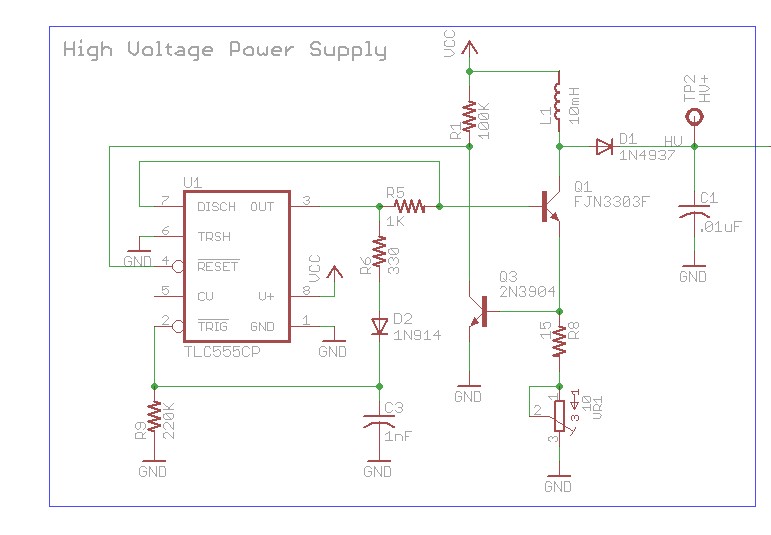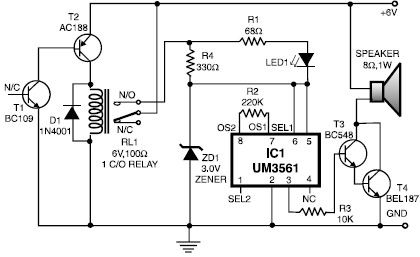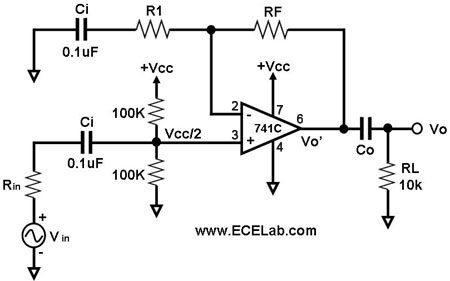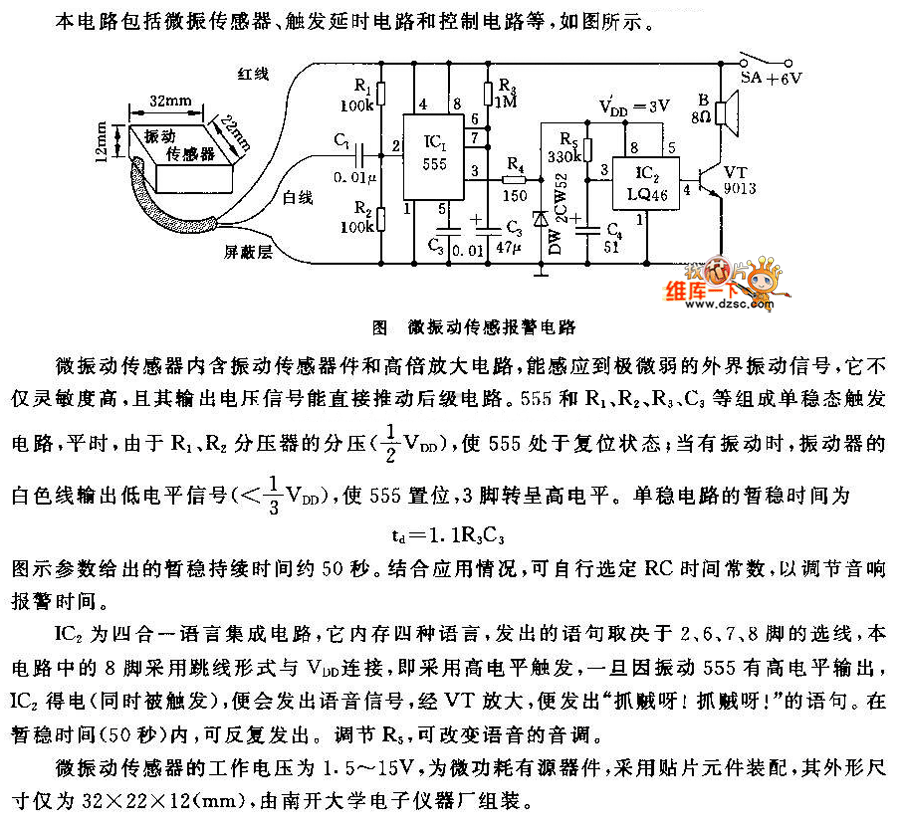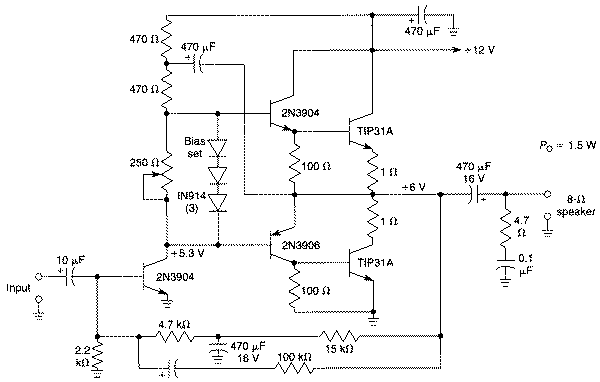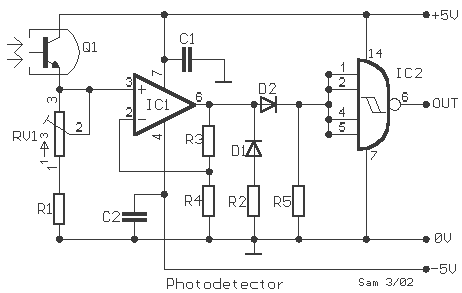
Computer AC power source monitoring circuit
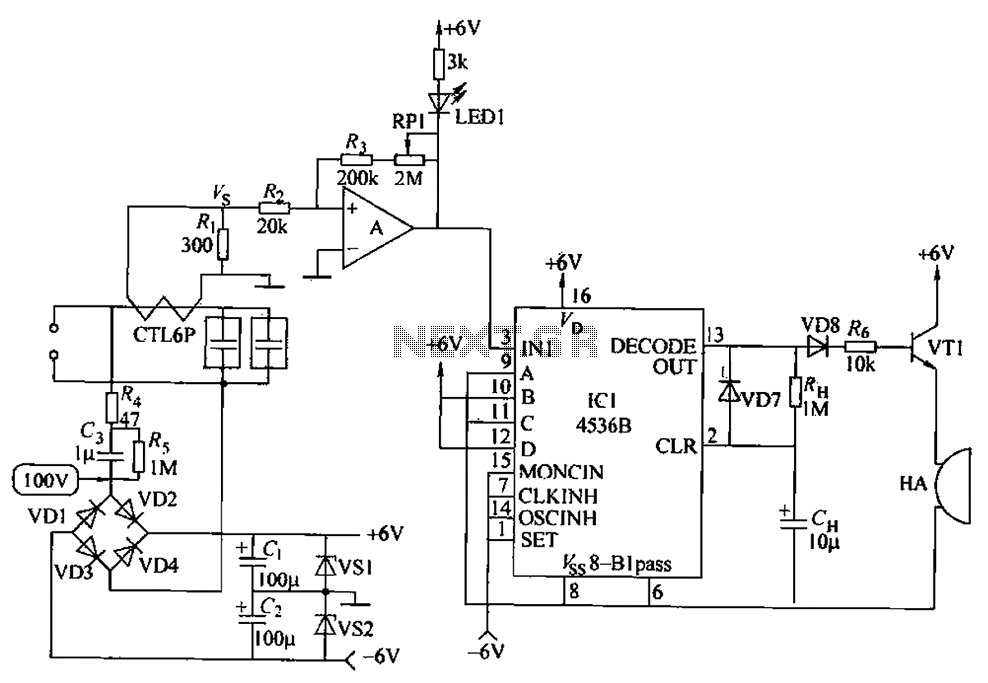
The circuit principle involves using a current transformer for current sensing due to the large AC power load of computers. This setup detects whether there is current in the power line, enabling the determination of its status. The LM393 comparator circuit (A) is utilized, where an alarm time interval is established by IC1 once the power is turned on. When the input time (A, B, C, D) expires, a binary code is input, allowing for the setting of the IC1 time interval. Inputs B and D are set to a high level, while A and C are set to a low level. The input power frequency is divided by 1/2. If the power frequency is 50Hz, the output is triggered after approximately 87 minutes; if the frequency is 60Hz, it triggers after about 73 minutes. The output from the decoder (DECODE() UT) goes high, activating VT1, which drives a buzzer (HA) to sound. The duration of the sound is determined by RI-I and CH.
The circuit design incorporates a current transformer that senses the alternating current (AC) load typical in computer systems. This transformer is critical for monitoring the current flow in the power line, allowing for real-time status assessment. The LM393 comparator serves as a key component in this circuit, providing a means to compare voltage levels and generate an output based on the comparison results.
Upon powering the circuit, IC1 is responsible for setting the alarm time interval, which is crucial for the operation of the system. The circuit is designed to accept input signals labeled A, B, C, and D. The configuration of these inputs determines the operational state of the circuit. Specifically, when inputs B and D are high and A and C are low, the circuit is prepared to process the input time.
The circuit also features a frequency division mechanism that divides the input power frequency by two. This is particularly relevant when considering standard power frequencies of 50Hz or 60Hz, which are common in electrical systems worldwide. The timing calculations indicate that an output signal will be generated after approximately 87 minutes for a 50Hz input frequency and 73 minutes for a 60Hz input frequency.
The output from the decoder (DECODE() UT) becomes high at the end of the designated time interval, triggering the transistor VT1. This action activates the buzzer (HA), producing an audible alert. The duration of the buzzer sound is controlled by the resistor RI-I and capacitor CH, allowing for customization of the alarm duration based on user requirements or specific application needs. This comprehensive design facilitates effective monitoring and alerting in environments with significant power loads, enhancing operational safety and reliability. Circuit principle: computers AC power load is large, the use of the current transformer current sensing. It can be used to detect whether a current power line, determine its st atus. Schmitt is LM393 comparator circuit (A), after the power is turned on, set the alarm time interval by IC1 completed. When the input time (A, B, C, D) ended input binary code, 1C1 time interval can be set. B, D is set to the high level, A, and C is set to a low level. 1C1 input power frequency 1/2 division. If the power frequency is 50Hz, after about 87min, when power frequency is 60H, after about 73min, the output of the decoder (DECODE () UT) output high, VT1 conduction, HA buzzer sound, the sound of time from RI-I, CH decision.
The circuit design incorporates a current transformer that senses the alternating current (AC) load typical in computer systems. This transformer is critical for monitoring the current flow in the power line, allowing for real-time status assessment. The LM393 comparator serves as a key component in this circuit, providing a means to compare voltage levels and generate an output based on the comparison results.
Upon powering the circuit, IC1 is responsible for setting the alarm time interval, which is crucial for the operation of the system. The circuit is designed to accept input signals labeled A, B, C, and D. The configuration of these inputs determines the operational state of the circuit. Specifically, when inputs B and D are high and A and C are low, the circuit is prepared to process the input time.
The circuit also features a frequency division mechanism that divides the input power frequency by two. This is particularly relevant when considering standard power frequencies of 50Hz or 60Hz, which are common in electrical systems worldwide. The timing calculations indicate that an output signal will be generated after approximately 87 minutes for a 50Hz input frequency and 73 minutes for a 60Hz input frequency.
The output from the decoder (DECODE() UT) becomes high at the end of the designated time interval, triggering the transistor VT1. This action activates the buzzer (HA), producing an audible alert. The duration of the buzzer sound is controlled by the resistor RI-I and capacitor CH, allowing for customization of the alarm duration based on user requirements or specific application needs. This comprehensive design facilitates effective monitoring and alerting in environments with significant power loads, enhancing operational safety and reliability. Circuit principle: computers AC power load is large, the use of the current transformer current sensing. It can be used to detect whether a current power line, determine its st atus. Schmitt is LM393 comparator circuit (A), after the power is turned on, set the alarm time interval by IC1 completed. When the input time (A, B, C, D) ended input binary code, 1C1 time interval can be set. B, D is set to the high level, A, and C is set to a low level. 1C1 input power frequency 1/2 division. If the power frequency is 50Hz, after about 87min, when power frequency is 60H, after about 73min, the output of the decoder (DECODE () UT) output high, VT1 conduction, HA buzzer sound, the sound of time from RI-I, CH decision.
